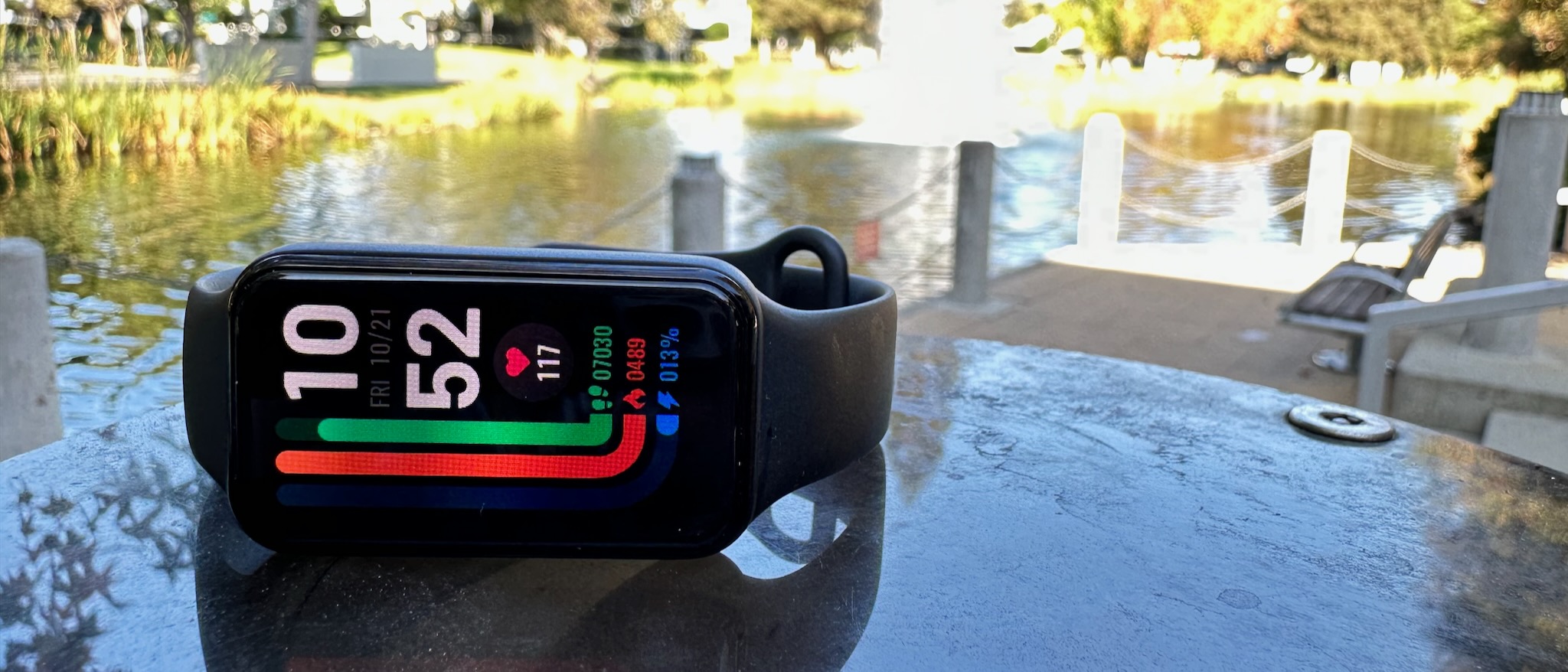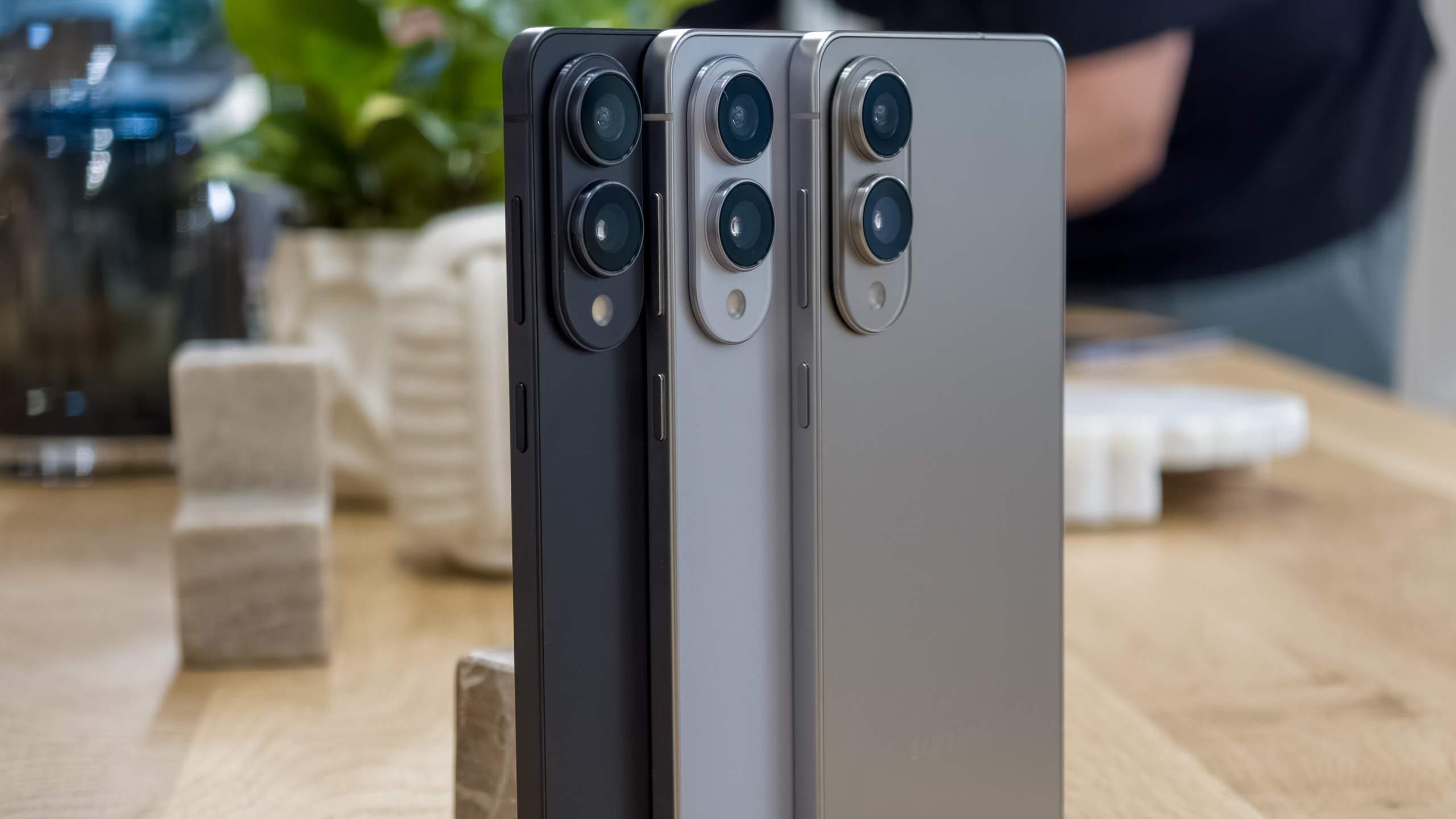Android Central Verdict
The newest Amazfit fitness tracker gives you a surprisingly bright and well-sized AMOLED display, plus a revamped battery that lasts over two weeks with light use or a week with continuous health monitoring and always-on display. After launch, the Amazfit Band 7 got support added for Alexa commands and music playback controls. Like most fitness trackers, it has no built-in GPS, so you'll need to keep your phone on you while you work out. It easily rivals the Xiaomi Mi Band 7 in the contest for the best budget fitness tracker.
Pros
- +
Very affordable
- +
PAI data with no subscription
- +
Up to 18 days of battery life
- +
Built-in Alexa support
- +
Continuous heart rate and stress tracking
- +
Really cool always-on display
Cons
- -
Connected GPS is sometimes unreliable
- -
No NFC or speaker
- -
Can't do anything with notifications
- -
Touchscreen-only/ no buttons
Why you can trust Android Central
The American market for affordable fitness trackers is fairly limited. Of the top-selling wearable brands, Apple doesn't make a compact tracker, Xiaomi and Huawei don't officially sell their Bands here, and Fitbit and Garmin trackers are on the pricey side — especially when you take Fitbit Premium into account. Until the rumored Samsung Galaxy Fit 3 arrives, only the Amazfit Band 7 properly slots into this cheap-yet-reliable niche in the U.S.
Compared to the Band 5 — Amazfit skipped the Band 6 — the Amazfit Band 7 has an AMOLED display that's 112% bigger, a battery that's 102mAh bigger, over a hundred new sport modes, and some new software tricks like always-on display (AOD) for the same price and just a few extra grams of weight.
The Amazfit Band 7 makes some compromises to hit its low price, but they're compromises that many people will happily live with. Based on my time reviewing the Band 7, I definitely consider it one of the best fitness trackers simply from a price-to-value ratio; but it does have some drawbacks to keep in mind before you buy one.
Amazfit Band 7: Price and availability

Released on July 20 in the United States, the Amazfit Band 7 soon became available in other "select countries" worldwide, including France, Germany, Italy, Spain, the UK, Japan, and Brazil. Other countries and territories like China, Latin America, Mexico, and India do not currently sell the Band 7.
In the United States, the Band 7 costs $49.99 and comes with either Black or Beige straps by default. It is available on Amazon, Best Buy, Target, and other retail sites. You can also buy four alternative band colors — Green, Blue, Pink, or Orange — for $10 extra directly from Amazfit's website, but you'll have to install it yourself.
Amazfit Band 7: What you'll like

The Amazfit Band 7 got a size upgrade compared to the Band 5, with a display that's close in size to that of the Fitbit Charge 5, and significantly larger than many competing brands. Despite that, its weight of 28g or 0.99oz is just slightly heavier than most rival trackers with much smaller displays — and significantly lighter than most fitness smartwatches, which usually fall into the 45-60g range.
At 282 pixels per inch, it falls 44ppi short of the common 326ppi standard found in the Charge 5, the taller Xiaomi Mi Band 7, and most smartwatches. But it can still display very small text details in a way that's perfectly readable, if not 100% crisp. Amazfit didn't quantify how bright the Band 7 gets, but in my experience I had no difficulty reading the display both indoors and outdoors.
Get the latest news from Android Central, your trusted companion in the world of Android
The new always-on display mode perfectly matches the font and positioning of whichever watch face you choose.
I absolutely love how Amazfit handled its "matching" always-on display (AOD) feature. Whichever watch face you choose, the AOD display perfectly matches the font and positioning, whether it shows a numerical time, time and date, or clock hand. Once you turn your wrist to activate the full display, all the other data pops into existence around it.
In the Zepp app for Android or iOS, you'll find a few dozen charming Band 7 watch faces that you can download and sync in about a minute, all free. You can then edit the watch faces on the app, and swap between them quickly by tap-and-holding on the main screen. Personally, I'd rather this shortcut be customizable too, so I could set it to pull up Alexa instead; but I'll admit that I loved being able to customize my look without having to dive into the Settings submenus.
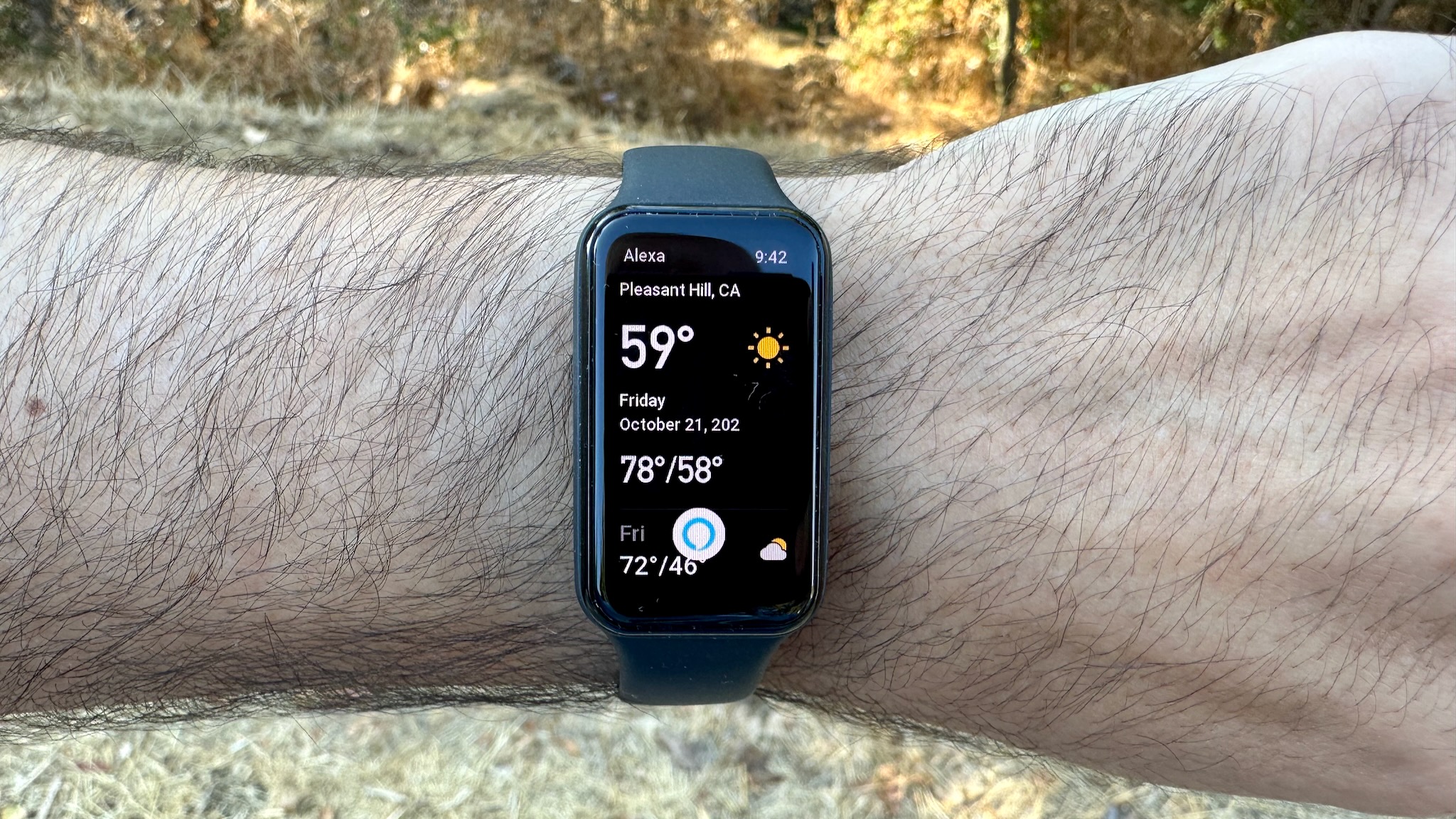
Speaking of Alexa, it apparently wasn't available at launch, nor were music controls, but both were active by the time my review unit arrived. Compared to my Echo Show 8, Alexa commands on the Band 7 took about a second longer to trigger, but that's really not bad for a budget device. The tracker has a mic but no speaker, so you have to read Alexa's responses; and there's no always-listening option, so you have to trigger Alexa via an app icon. But I personally prefer my wearables don't listen to me, and I'm fine losing the mic for the sake of longer battery life.
Amazfit gives the Band 7 an 18-day battery estimate with light usage, though 12 days with heavy usage is what more people will probably match. That estimate includes heart rate checks every minute, all-day stress monitoring, hundreds of notifications with vibration on, daily app syncs, occasional blood oxygen checks plus nightly sleep tracking, and 90 minutes of exercise tracking.
Add the AOD setting and more frequent exercise, and the Band 7 is more likely to last about a week per charge, if not less. But that's still much better than most competing trackers that only last a few days with all features activated. So long as you temper your expectations, the Amazfit Band 7 is still one of the best fitness trackers for battery life, ignoring watches that weigh twice as much.
| Category | Amazfit Band 7 |
|---|---|
| Display | 1.47-inch (diagonal) AMOLED |
| Resolution | 198x368 (282ppi) |
| Material | Polycarbonate case; TPU strap |
| Water resistance | 5ATM |
| Sensors | BioTracker 3.0 PPG biometric sensor: Heart rate, blood oxygen, Stress |
| Tracking | 3-axis Acceleration sensor; Geomagnetic sensor; Connected GPS |
| Software | Zepp OS; connects to Android 7+, iOS 12+ |
| Sport modes | Running & walking (5); Cycling (3); Swimming (1); Outdoor workouts (5); Indoor sports (24); Dance (16); Boxing (12); Ball sports (25); Water sports (6); Winter workouts (3); Leisure sports (12); Board & card games (5); Others (3) |
| Battery | 232 mAh; 18-day battery life |
| Dimensions | 42 x 24 x 12.2mm; 1.67 x 0.96 x 0.48in |
| Weight (with strap) | 28g / 0.99oz |
| Wrist size support | 166mm-233mm |
Like most fitness brands, Amazfit doesn't advertise its wearables' CPUs or RAM, since they typically use very little power to optimize battery life. But I found that the Band 7 is acceptably fast at responding to my taps and swipes, with smooth scrolling through the menus and quick access apps.
The Zepp PAI score system will encourage you to hit heart rate targets specific to your fitness level to stay healthy.
Amazfit's claim to fame is its PAI score through the Zepp app. It takes your heart rate data, daily activity intensity, and a "dynamic comprehensive evaluation of personal physiological data" and converts it into points that you earn to try and hit a 100 PAI threshold. Basically, you're aiming to work hard relative to your fitness level, and the more fit you get, the harder you'll need to work to maintain your PAI.
It's not exactly a workout program on the level of Garmin, but it does essentially encourage you to adjust your intensity based on your HRM results, which motivates you to work hard without needing a complicated workout plan. And if you get overwhelmed looking at different stats like VO2 Max or running power, you can just focus on PAI and let the algorithm tell you how you're doing. The only thing it's missing is a Body Battery or Daily Readiness equivalent.
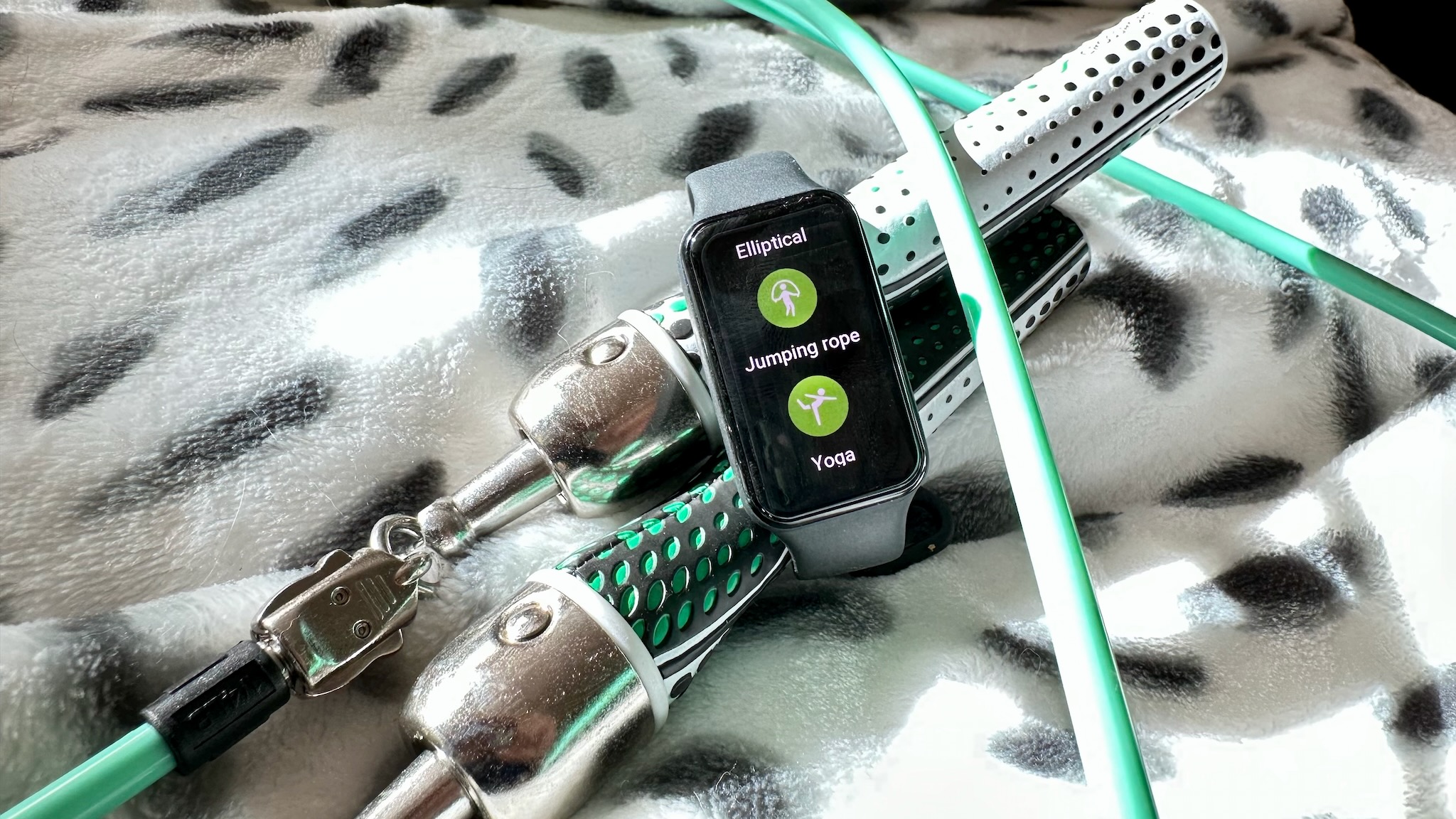
Whatever sports or activities you use to get fit, the Amazfit Band 7 almost certainly has a sport mode for it. Out of the 120 modes available, you'll find the most common modes like running, cycling or swimming, as well as more outlandish modes like parkour, chess, square dancing, or kite flying.
Across all modes, you can set a workout goal based on time or burned calories. Only a few modes have actual exclusive features, such as swimming X lengths of a pool, walking a certain number of miles, maintaining a certain pace while running, or completing a certain number of intervals.
So don't buy the Band 7 expecting it to actually measure your number of punches for Boxing or number of jumps for Jumping Rope. The perk here is that you can label your activities instead of just using a default cardio mode, and check which activities are getting you the healthiest. You'll need a Garmin smartwatch for more advanced sports modes, and that'll be both more expensive and much heavier.
As for what the Band 7 can do, I like how easy it is to set up a unique goal before a workout, and Amazfit is very quick to let you know if your pace is flagging or your heart rate has gotten too high for a casual run.

You can set the Band 7 to automatically measure your heart rate and stress at customizable regular intervals, plus check blood oxygen levels at night. You can also spot-check all three metrics, either individually or with a "one-touch measurement" for all three simultaneously. That's something I wish more trackers did instead of separating everything.
Amazfit Band 7: What you won't like

With a $50 tracker, you can't expect every feature to show up, so let's run through the list of what you won't get. No NFC support means no tap-to-pay. No speaker means no answering Bluetooth calls. No built-in GPS or music storage means you have to keep your phone with you during workouts. And while Zepp OS will show your notifications and allow you to tailor which will buzz on your wrist, you don't have actionable notifications; in other words, clearing them on your Band 7 doesn't clear them on your phone and you can't respond to anyone with quick responses.
Connected GPS is common enough on petite trackers; even the Garmin Vivosmart 5, which costs three times as much, has no built-in GPS. Every time you open a GPS-tracked sports mode, the Amazfit Band 7 prompts you to open your app to establish a connection. It's a bit annoying, but at least the connection is truly instantaneous, as in you open the Zepp app and boom, GPS is active even before the home screen loads.
The Amazfit Band 7 gets mileage and heart rate mostly right, but it does lose your GPS signal sometimes.
What's more annoying is that the GPS connection doesn't always stay connected. I ran with both the Band 7 and a Garmin Forerunner 955 I'm currently reviewing, and my Amazfit mileage results always ended up within a few hundredths of a mile of the Garmin by the end of a workout. But when I turned on the setting to maintain a 10-minute pace during one run, there were several moments when the watch suddenly insisted I was only running at a 15- or 16-minute pace no matter how hard I ran, which is a telltale sign that the Band had lost the signal. I ended up making my running goals based on duration, mileage, or heart rate instead; but I hope this is something Amazfit can fix with future software updates.
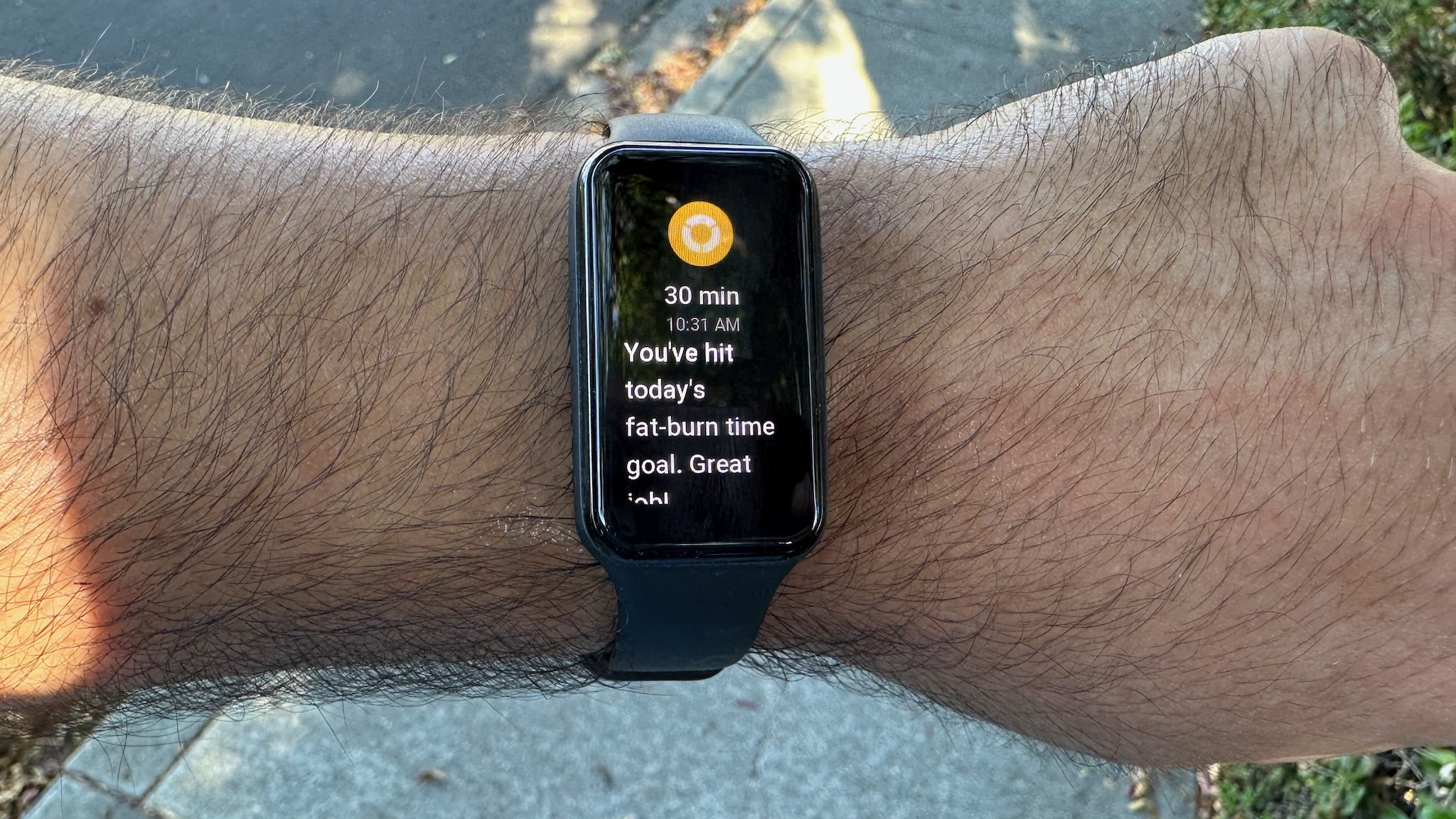
When I reviewed the GTS 2 Mini in January 2021, I complained about the Zepp app's labyrinthian settings and the "generally lackluster localization." With the Band 7, this is less of an issue but still partially true.
Finding the settings for specific features will take digging, and the tech-savvy may struggle to optimize the Band 7. But I appreciated the robust options available, so I won't complain about it being complicated. As for the English translation, I spotted a couple of typos and misspellings, such as the "virtrual" assistant and "Your 1 mile time is09'00" with no space, and features are often described awkwardly, as though coming from a translation app. I see this as an Amazfit quirk rather than a debilitating issue, but I can't speak to how well the brand did for other languages.
The narrow touch-only screen needs deliberate swipes and doesn't always have enough room to display information.
Like all narrow fitness trackers, the Band 7 can't always display much information at once horizontally, which means you frequently have to wait for text to scroll across the screen before you know what you're looking at. Again, I don't see this as a reason not to buy a tracker, but it does make me miss my larger, rounder smartwatch screens.
The Amazfit Band 7 has no physical buttons, and you're going to occasionally have to swipe more than once for a motion to register, or accidentally activate something while trying to swipe. It's a problem with all touch-only wearables, especially when your fingers get sweaty. Compared to some trackers with narrower displays, the Band 7 is a better choice because the display is large enough that your finger has enough room for deliberate swipes.

This isn't unique to Amazfit, but I've grown sick of proprietary charge cables. I managed to lose the pogo pin cable that came with the Band 7, and the cables I used to charge the GTS and GTR 2 have different pin sizes and didn't work, so the Band 7 eventually died on me, and I'll have to buy some random charger off of Amazon to get it working again because Amazfit doesn't sell replacements on its site.
Lastly, the included band is as comfortable as any silicone strap, but the design makes it difficult to form a tight fit because the strap naturally slides through its holder as you tighten it. I found that it always sits comfortably but has just a little bit of give, which someone who prefers a tighter fit will find annoying. And because of the proprietary design, you won't find many third-party band options to swap in. I do appreciate how cheap the first-party replacement bands are, at least.
The competition
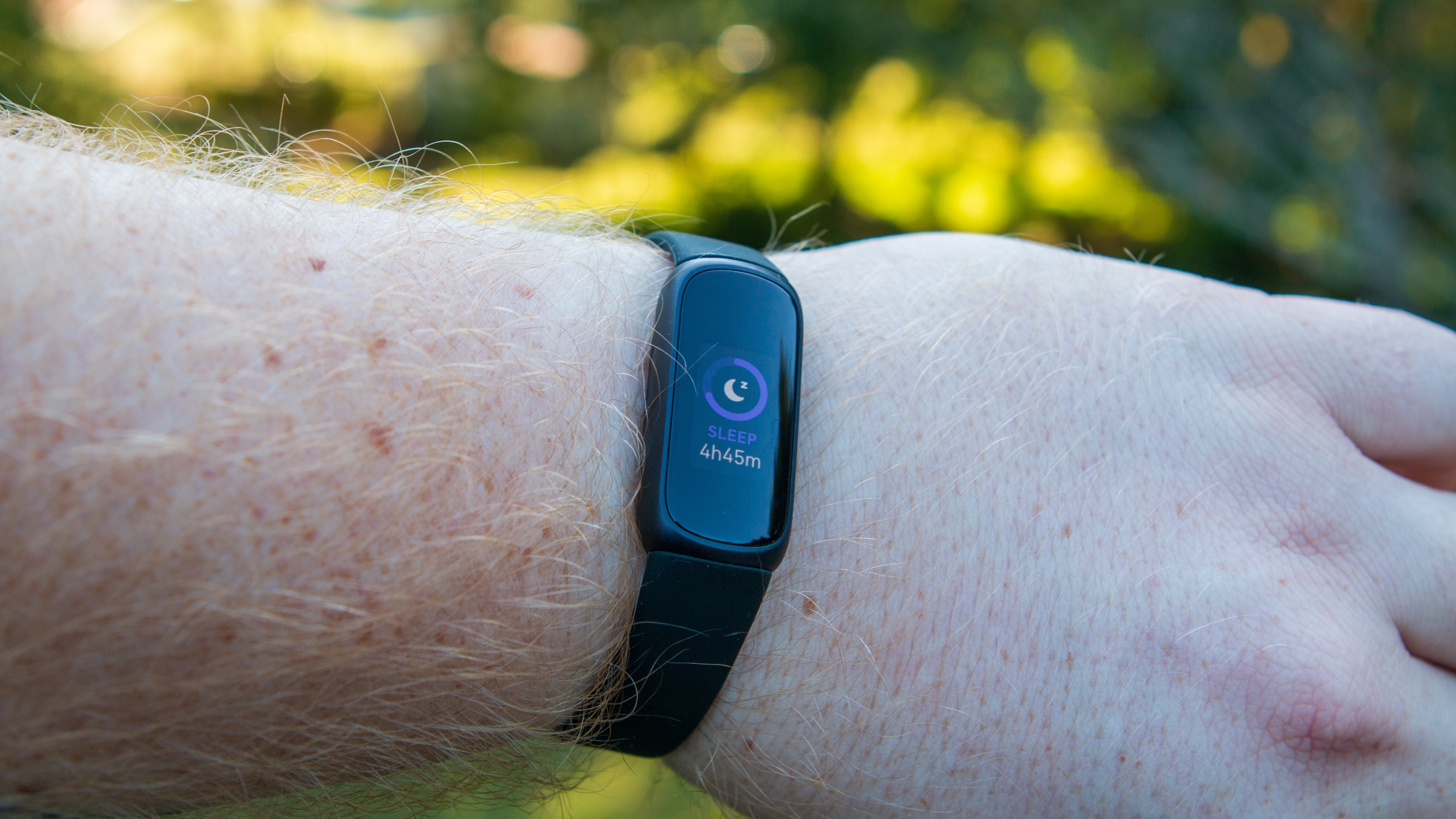
While the Amazfit Band 7 is a fantastic option for people that don't want to spend much money, you may want to turn to Fitbit if you want more active coaching and in-depth data. The Fitbit Inspire 3 is a sleek tracker alternative that'll last ten days per charge and trades a smaller display for an even lighter weight, with the benefit of Premium to guide you.
But the best fitness tracker (if money is no object) is the Fitbit Charge 5, which has built-in GPS, ECG and EDA sensors, NFC payments, and the option to quick-answer Messages on Android phones.
International fitness lovers may want to consider the Xiaomi Mi Band 7, which has a slightly improved display and pretty much all the other perks as the Band 7, including PAI scores. 5ATM water resistance, and a solid 14-day battery life. But it doesn't have built-in Alexa, if that matters to you.
Otherwise, you can always look at Amazfit smartwatches, which give you a larger display size and similar affordability. We're currently reviewing the GTS 4 Mini and were quite happy with the last generation of devices, the Amazfit GTS 3 and GTR 3 Pro.
Amazfit Band 7: Should you buy it?
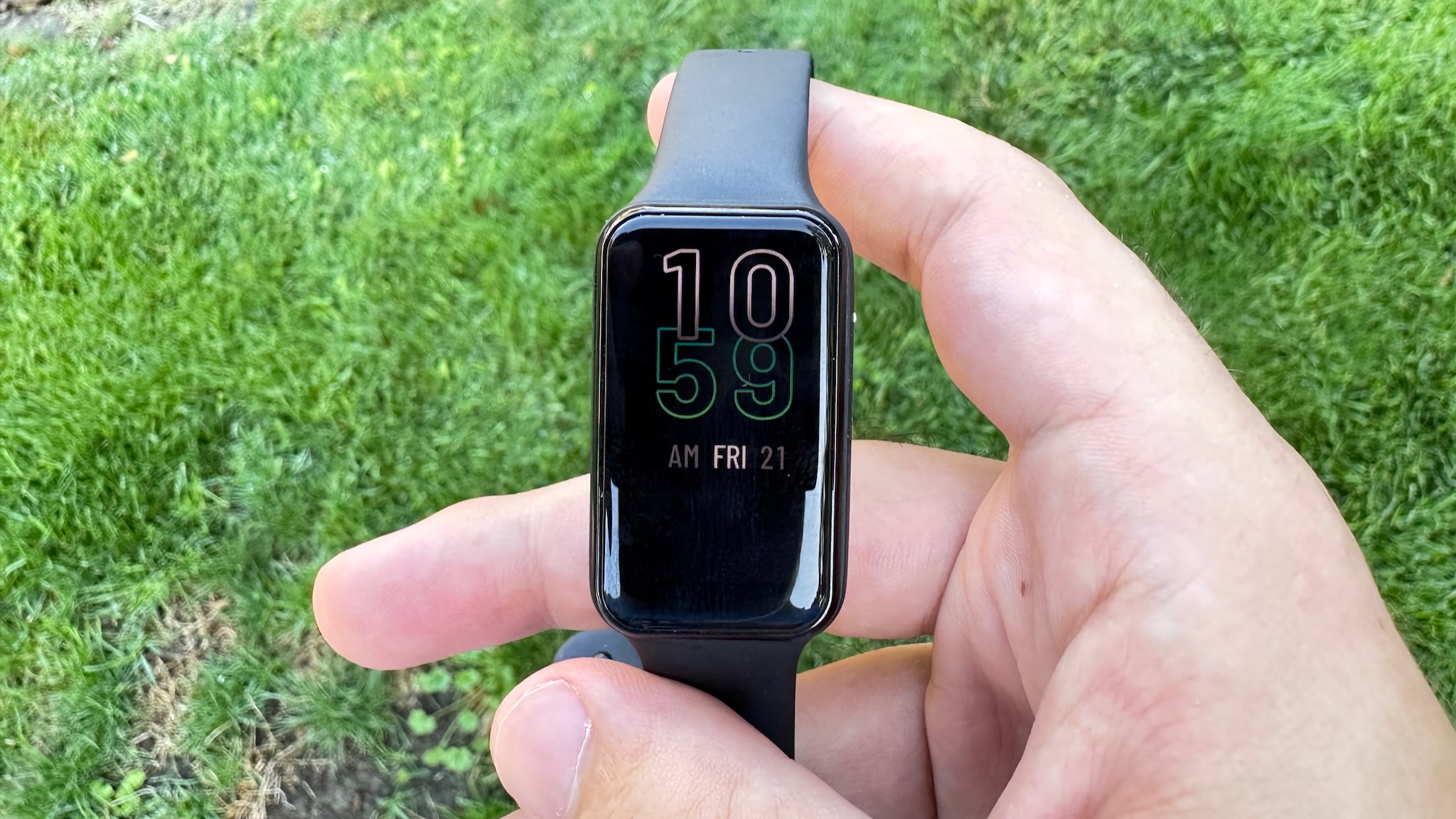
You should buy this if...
- You want a lightweight, budget-friendly tracker
- You hate having to constantly charge your device
- You want quick access to Alexa or the time with AOD mode
You shouldn't buy this if...
- You want guided coaching or more in-depth health reports
- You don't like working out with your phone in your pocket
- You want third-party apps or closer phone integration
Plenty of fitness smartwatches and premium trackers make things very complicated. They're targeting serious self-guided athletes who need help maintaining a specific routine, or people who want detailed health reports and warnings about irregular heartbeats or bad falls. And these brands often expect you to pay a lot for this information and wear their devices constantly.
The Amazfit Band 7 technically does give you health warnings and encourages you to work out harder to meet your PAI score, but it's really the kind of device that you strap on, work out with, and then forget about as it exports your data to your favorite health app. You can ask Alexa questions if you want some basic smarts, but otherwise, it keeps things simple and looks good doing it.
For athletes not looking to spend extra on features they don't really need, the Amazfit Band 7 will be the ideal choice. Otherwise, don't be afraid to check out other trackers that add in a little bit extra.
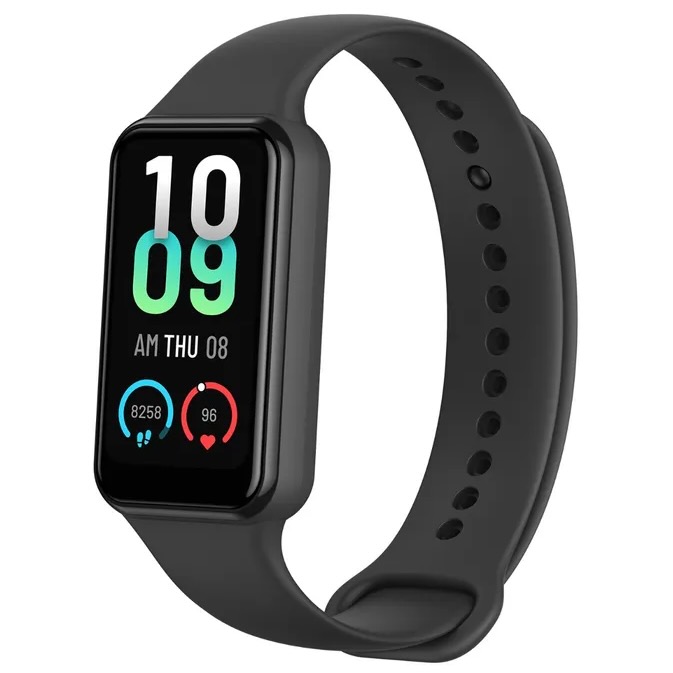
With an 18-day battery life, bright always-on AMOLED display, Alexa support, 5ATM water resistance, heart rate and blood oxygen tracking, and 120 sports modes, the Amazfit Band 7 is a great choice for folks just starting their fitness journey who don't want to overspend on tech they don't need.

Michael is Android Central's resident expert on wearables and fitness. Before joining Android Central, he freelanced for years at Techradar, Wareable, Windows Central, and Digital Trends. Channeling his love of running, he established himself as an expert on fitness watches, testing and reviewing models from Garmin, Fitbit, Samsung, Apple, COROS, Polar, Amazfit, Suunto, and more.
